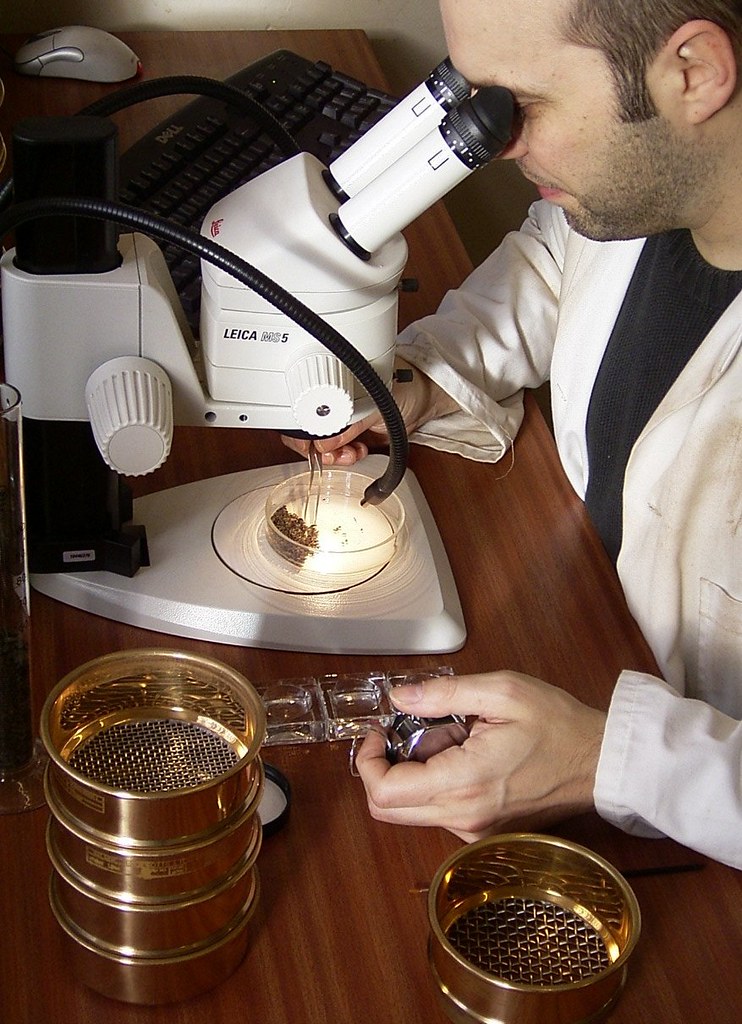How do we know all of this? Archaeology!
The Stone Age, Bronze Age and Iron Age all fall into the category of 'prehistory', which means that there are no written records of these communities. So, all our knowledge of these periods comes from interpretating the archaeology.
Sometimes, this can make it tricky for us to know what was going on, but as we find more evidence, we can get a clearer picture of the past.
Archaeology is all about people, and so archaeologists are interested in anything made or changed by humans. This can be anything from entire houses, to buttons, or animal bones with butcher’s marks!
The work of the specialist is a painstaking process of identifying and counting hundreds of tiny remains.
Insert Image : Archaeologist measuring a femur.
Caption: Artefacts are carefully cleaned and measured. In this case a femur (leg bone) is measured to help give a rough idea of any similarities within a group of individuals.
So, where do archaeologists find these prehistoric sites? Cities, villages, ancient cemeteries, burial sites, stone monuments, imprints of old hillforts and rock art are all great examples of places where archaeologists can investigate for any signs of prehistoric life. Archaeologists today are still discovering incredible finds, something as small as chippings from stone tools or carved pieces of animal bone can tell us so much about our prehistoric ancestors.
Picture of field archaeologists:
Insert: Early Bronze Age penannular ring ditch
Caption: A large ring ditch represented one of the only features recorded of the Early Bronze Age period (2400-1500 BCE). With an internal diameter of 16m, the ring ditch contained small quantities of Collared Urn and Beaker pottery, animal bone and worked flint tools.
Insert image: Field archaeologist on site at Datchett
Field archaeologists carefully dig trenches looking for artefacts or traces of buildings etc. The soil is painstakingly removed layer by layer using hand tools to make sure that nothing is missed or damaged.
